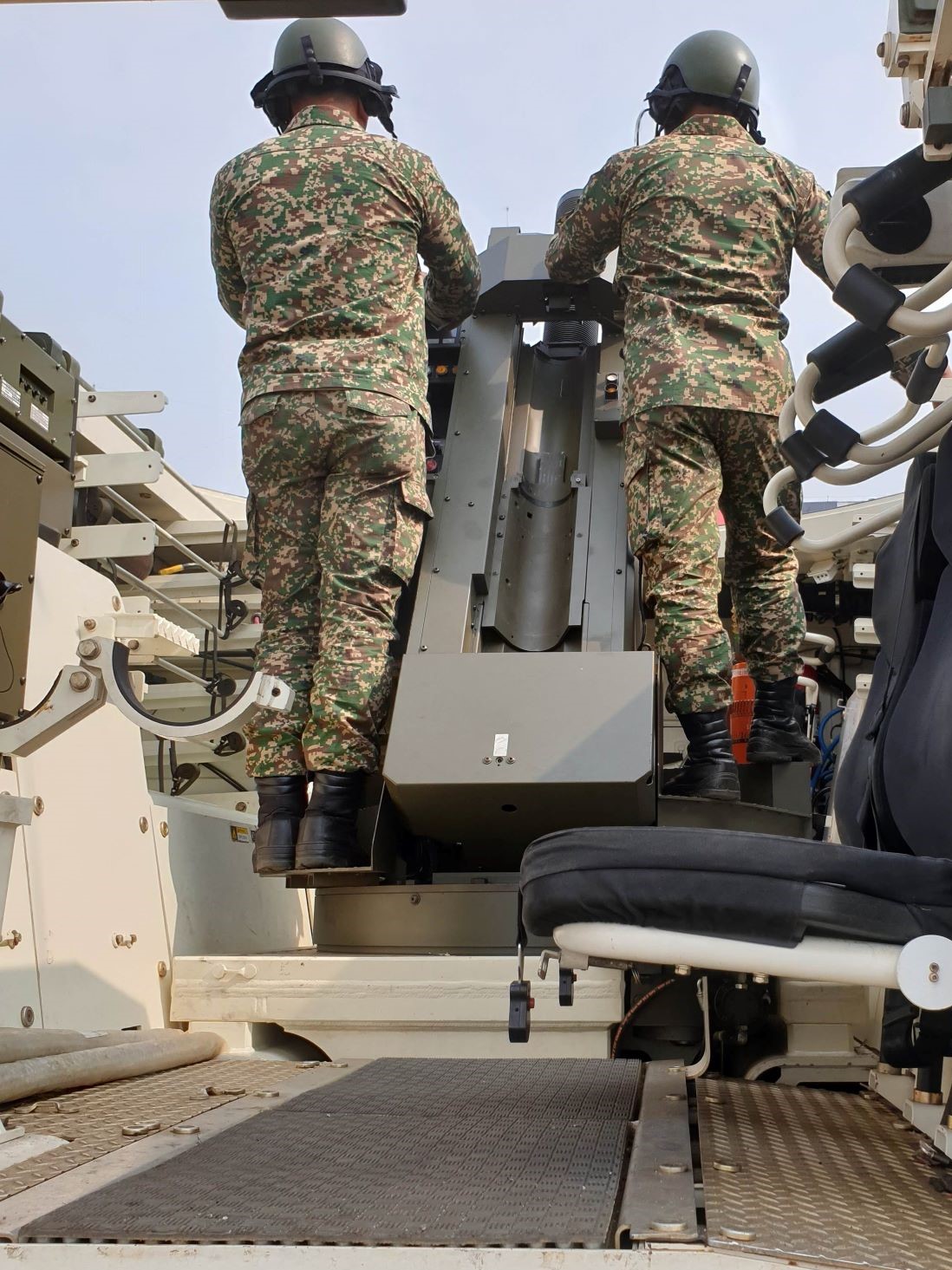
SHAH ALAM: Locally developed weapons. The Science & Technology Research Institute For Defence (STRIDE) is collaborating with the armed forces and the National Defence University of Malaysia (UPNM) to develop a 12.7mm sniper rifle and a 120mm mortar. Defence Minister Mohamad Sabu told Parliament today said both weapons were still under the prototype stage and under development.
He said the prototype of the weapons would be handed over to the armed forces and selected security agencies for testing and evaluation. “Once the testing and evaluation is completed and it is found to be suitable for the end users it will be offered to a chosen defence company for manufacturing and marketing,” he said when responding to oral questions at the Dewan Rakyat. He did not revealed at what stage is the development of the sniper rifle and 120mm mortar.
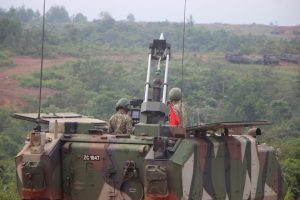
Mohamad said the ministry will find ways to ensure that the local defence industry remain relevant and to reduce the dependancy on foreign arms manufacturers.
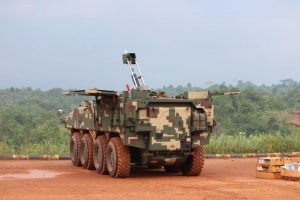
For the 12.7mm or .50 caliber rifles, the Army and the police are currently using the Barret .50 caliber rifles and one has to wonder if there is a need for a locally developed one. That said Indonesian state owned arms manufacturer Pindad has already produced a 12.7mm sniper rifle so that’s probably the inspiration. Anyhow, as you are aware that the army has a small number of 120mm mortars, integrated with the Adnan and Gempita APCs. These are the Thales 120mm Rifled recoiled Mounted Mortar (2R2M) system. Infact the Army has more 81mm mortars in service compared to the mounted 120mm system.
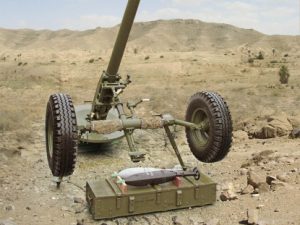
The fact that they choose a 120mm system to be develop is a probably that they think the Army should be equipped with a longer range system for its units. Typically a 120mm mortar has a range of 200 meters to 7,200 meters compared to the 81mm, with a range of 70 meters to 6,500 meters.
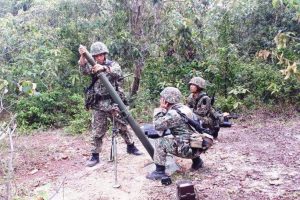
However, most modern 120mm mortars are now towed as they are too heavy to be lug around especially with the shell typically weighing around 14kg compared 4.15kg for the smaller 81mm mortars.
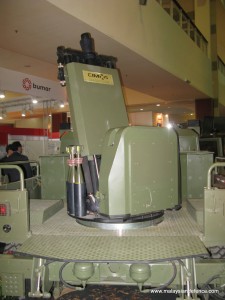
If indeed the locally developed 120mm mortar is put into service it is likely to be towed, leaving the 81mm and 60mm mortars with specialised units like the GGK and the 10th Para Brigade. It is unclear whether the Army actually wants these.
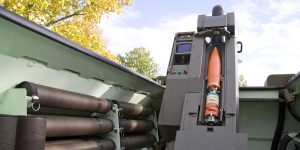
— Malaysian Defence
If you like this post, buy me an espresso. Paypal Payment

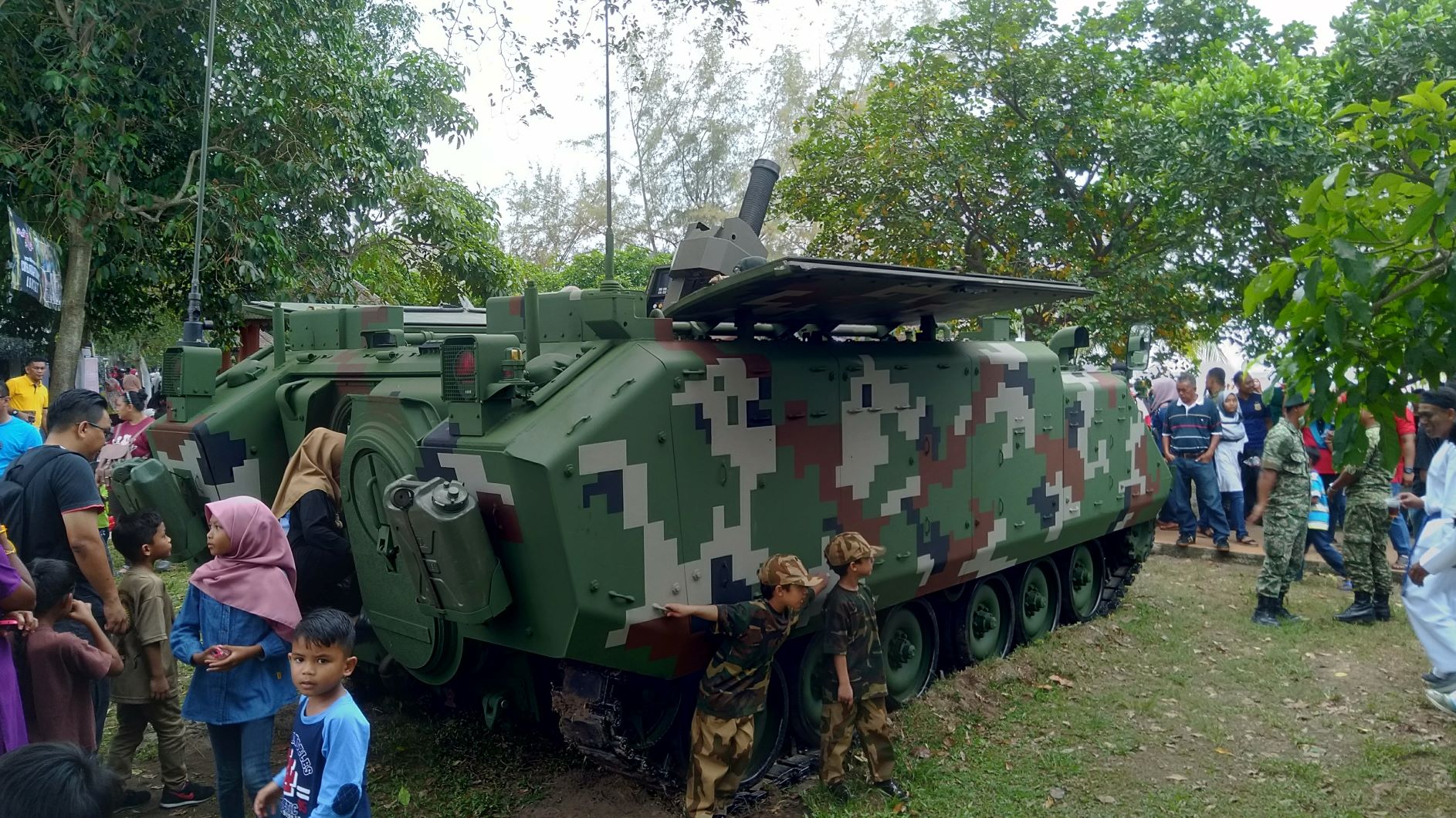
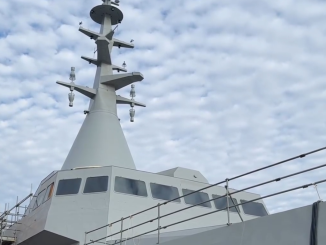
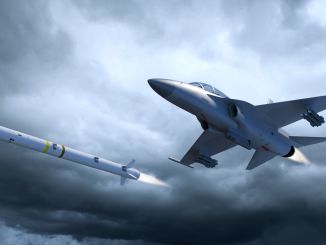
Great news indeed. Even better if they could repurporse some of the condor or sibmas as mortar carrier.
As for the sniper rifle, if Stride or SMEO have the expertise to produce the barrel they already have one foot into producing malaysian-made .50 cal rifle. In conflicts in middle east, there are plenty of examples of sniper rifle that is made using NSV heavy machine gun barrel.
Hell even the MILF had their own “barit” .50cal and even 40mm grenade “sniper rifle”
Possible.
A mortar is basically 1910s technology. And we definitely need more 120mm mortars. If a cheap local mortar can be developed, it can replace the Model 56s at lower cost and provide the infantry battalions with a powerful organic indirect fire weapon.
The key to employing mortars in today’s battlefield however, is the networking with observers and fast and accurate computation for quicker response time.
I don’t think we even have mortar and artillery computer systems. Do we? I only see people waving bits of paper around.
So we need to invest in these as well. Hopefully we can, with savings from purchasing a lower cost local mortar.
A few years ago STRIDE bought a 120mm from Slovakia and there are photos of live firings carried out. This was supposed to be the basis of a 120mm lightweight mortar STRIDE was going to develop.
No doubt some will be elated at the news but the questions to ask is how many locally developed mortars and rifles the MAF needs and how they will compare in price and performance to ones sourced from abroad.
Dundun – ”Hell even the MILF had their own “barit” .50cal and even 40mm grenade “sniper rifle”
News reports at that time had them supposedly being forged in Malaysia but this turned out to be untrue.
Chua – ”The key to employing mortars in today’s battlefield however, is the networking with observers and fast and accurate computation for quicker response time.”
That is the key to everything actually.
Chua – ” don’t think we even have mortar and artillery computer systems. Do we?”
Had hand held ballistic computers for decades…… One we have now – for arty and mortars – includes Morfire. For the G-5s we also got a South African FCS sold by Thales.
Chua – ” it can replace the Model 56s at lower cost”
A mortar can never totally replace arty; which is why some armies haven’t gone down the 120mm route.
A howitzer is more accurate, has higher response time and superior penetrating ability.
Eventhough this news came from menhan parliament report, until they really launch it, its just another news (not good news). Its no different than the kereta terbang made in malaysia news
hopefully those new 50 cal rifle wont be as bad as our locally produce styer.
Reply
Who said the locally made Steyrs are bad. I have shot both and cannot find much difference.
@Azlan
>”A howitzer is more accurate, has higher response time and superior penetrating ability”
Not our very outdated 1956-era shorty pack hows.
Well, so we do have handheld ballistic computers, that’s good.
Given the existing 2R2M mortars will continue to be used, let’s say 25 battalions equipped with 6 120mm mortars each, plus a few training weapons – about 170 weapons? That isn’t a lot to achieve economies of scale with.
120mm mortar? (facepalm)
How many 120mm mortar does the army need? Does the army see the 120mm mortar as a replacement for the 105mm pack howitzer? How does this makes the local defence industry relevant?
Another thing is the ease of use. Just see how high the barrel is for the soldier to load the 120mm mortar. And that is for a tall westerner, not a short asian.
http://pds27.egloos.com/pds/201402/21/60/f0205060_5306ffed77a6c.jpg
http://s1.dmcdn.net/v/OYtQY1RaBVcJEjjTN/x1080
Why IMO it is easier for us asians to operate the 105mm howitzer rather than a 120mm mortar.
And if you really want some 120mm rifled mortar, you can ask USMC nicely about their 66 nearly brand new retired M327 120mm mortars and you could probably get them for free.
The slovakian 120mm mortar that the R&D could be based on is a smooth bore design, compared to the rifled design of our current 120mm mortar (which is same rifled design as the USMC M327 mortar). So it probably cannot use the current motar shell in the inventory. It was actually developed for the austrian army and now marketed as the hitenburger mortar.
If you really want to R&D something that gives a meaningful impact, some things i can think of…
– accessories for M4. hand guards, polymer flip up sights, polymer magazines
– reverse engineer the RPG-7
– comfortable armor plate carriers designed for smaller malaysian statures
– armor plate carriers with flotation system for amphibious or maritime operations
– personal body cooling system for armoured vehicle operators for open hatch operations.
– compact PDW-type weapon based on the AR15 for armoured vehicle operators (for ease of use in the tight confines of a tank or IFV)
– Study into IED-type mines with EFP
– rapid modular components to convert any civilian vehicle of opportunity doublecab 4×4 into a weapon carrier.
– if we now have jammers for drones, why not handheld jammers for UGV like the hunter?
– proprietary control software conversion for commercial drones like the DJI to limit data leakages
Oh and please dont even think of designing from scratch your own light tank…
I can not say it is a good idea or not. Maybe just a simple question. Is it for real and why trying to develop bigger weapon if standard rifle also failed?
I gut we’ll just have to ask YB Mat Sabu then 🤔
There are plenty of choices for 120mm mortar and 12.7mm rifle in the market. Buying them Commercial of the Shelves (COTS) is a lot cheaper though.
If they want to develop new weapon, why not those that we didn’t have yet or hard to come by but will be handy and easy to develop. For example, 105mm Pack Howitzer mounted on the back of Handalan lorry (like Thailand) or maybe a Toyota Hillux with Multiple Rocket Launcher(MRL) like those in Libya and Syria? Utilizing COTS or old equipment to make a new product based on lesson learnt from current conflict is a cheap way to go around rather that reinventing the wheel.
Have we first ensured we made the various ammunition we use of sufficient quality that we could confidently export to other markets/armed forces?
Reply
Yes our local ammo are good enough for the export market. However as we do not make many of them, they are not price competitive.
Maybe not total replacement but the mortar can be used to complement 105mm. The venerable mod 56 pack howitzer is going to be replaced sooner or later and right now there is simply no artillery in the market that is as light as the pack howitzer that can be undersling by nuri or EC725(there’s the chinese copy of pack howitzer but I doubt we go that route). Besides these would probably got to RAD anyway.
That’s why I think it’s better to give 120mm mortar to Para instead of the LG1, due to how light it is compared to even the LG1. We can make argument that LG1 has farther range than 120mm mortar but how realistic it is that our Para engage enemy in the front line at maximum range? Even during ops daulat (and the famous pic of our guys bombing the hell of them mundus with pack howitzers and mortar), it was done well within the range of a 81mm mortar. I’d imagine 120mm would’ve an even better job due to how much more powerful it is
“they are not price competitive”
That is a volume game, the more you sell the cheaper it cost. So how? Just sell more! How to do that? Attract more customers via sales activity & promo! Leverage on our neutral stance to supply any country in need and widen the range, not just to Western munitions but Russian as well. MITI & MINDEF should have done all this, it will give our defence industry a good grounding & importantly capital to sustain before developing above weapon systems.
Reply
Not really, the way I was told was that for the government itself to buy them in a large and consistent manner so the cost will get lower and lower so we can then compete on prices. Anyhow it is the government that give license to sell the ammo and it doesn’t do that for any country
Chua – Not our very outdated 1956-era shorty pack hows
Irrespective of whether it’s a Model 56 made in 1968 or a M777 made in 2013 a howitzer will always have certain advantages over a mortar.
Due to the reasons I mentioned previously a mortar can never totally replace a howitzer but it can complement it. The whole intention in getting the 120mms is not to do away with the 105mm as both are good for different things.
@Marhalim
Government can only buy so much as our Armed Forces don’t expend them in a large and consistent rate. We’re not in war with anyone to expend at them. What the Government could do is provide grants, tax exemptions, rebates, bartering to prospective countries and assurance of continuous supply of munitions. And of course the restriction to sell is stupid. Case in point: US civilian market is a huge potential and they can pay well for good munitions.
By mastering basic munition tech, we could advance to smart munitions, and then on to the weapon delivery systems. This current rifle & mortar development is so out of the blue and just plain reinventing the wheel which is likely to be pricier than those in market. Will Government be buying them if they are pricier? Can Government buy them in sufficient numbers to justify cost of R&D? This smells like another national car money sinkhole project whose small market ultimately cannot justify the business.
Reply
That’s why I said in earlier comments that if the government wants self reliance in defence, it must be prepared to spend money on them, other wise we will continue the current difficulties. IMHO Mat Sabu statement on the locally developed rifle and mortar was just talk and not really a commitment to do so.
dundun – ”no artillery in the market that is as light as the pack howitzer that can be undersling by nuri or EC725”
On paper yes; assuming the needed air assets are available for the tasking. just to lift a battery, plus crew and ammo and to keep it resupplied will take several sorties – we can’t assume it will be a low intensity conflict with low ammo useage and that the needed lift assets will be available or operational when needed, in the numbers needed.
dundun – ‘We can make argument that LG1 has farther range than 120mm mortar but how realistic it is that our Para engage enemy in the front line at maximum range?”
What happens if enemy arty are present in ranges [beyond a mortar’s maximum effective range but within that of artillery] and need to be silenced, if the nature of the target requires more precision or if something with a better level of penetrating performance is needed?
On paper the 120mm mortar has several advantages but there’s a reason why some armies don’t have them and why some employ them in conjunction with arty.
dundun – ”I’d imagine 120mm would’ve an even better job due to how much more powerful it is”
Depending on the target, the terrain and whether there’s overhead cover.
This is IMO something that we can study and design too. To create a comfortable uniform for our high humidity tropical climate
http://www.armytimes.com/news/your-army/2019/06/26/tired-of-sweating-in-your-acus-try-these-new-hot-weather-cammies/
Not sure about “developing” our own mortar though as they can be bought for cheap nowadays, maybe its to develop a mobile carrier system of some sort?
Reply
A mobile carrier system mortars are also readily available
Not sure about “developing” our own mortar though as they can be bought for cheap nowadays, maybe its to develop a mobile carrier system of some sort?
@Azlan
As I think we have discussed previously in other threads, there are good reasons why the Mod 56 has been long obsoleted and abandoned by (almost?) every EU army
Accuracy and penetration of that particular system is less than par. And response time of mortars is usually faster than howitzers in general.
I admit that range is an issue, but if so then we would replace the Mod 56s with 105mm howitzers.
@Joe
Mortar smart munitions were a particularly difficult problem due to the high muzzle velocity of mortar shells. They’re even more complex than guided bombs and howitzer rounds. Cost-effective guided mortar rounds are a relatively recent development even though NON-cost-effective rounds have been around quite some time.
Azlan
The argument should’ve been made to our pack howitzer as well which doesnt have that much more range than a 120mm mortar but then again it is still being used by Para even until now. The fact that we only got LG1 very recently despite the talks of replacing the pack howitzer since late 90s meant that the issue is either addressed by other means (like our astross or G5s or using air power) or simply that the top brass simply doesnt think that Para shouldn’t concern themselves with counter battery operation. Besides if our Para has gotten themselves in such situation when they’re being outranged by artillery fire that means the planner is having a piss-poor job at deploying them
@Chua
“Cost-effective guided mortar rounds are a relatively recent development”
Yes, small calibre smart munitions are still a green field which is an opportunity for our R&D guys since there will be a market in the world, as compared to reinventing the mortar or sniper rifle. Not just mortar rounds but smart arty shells, propelled grenade rounds, and such. If only we have the vision, and the money commitment this could be a huge potential for our defence industry.
We had taming sari “smart munition” and nothing came out of it
@Joe
It’s not a green field at all. Others are way ahead of us. Like a certain neighbour.
Chua,
Range is important but for me – being my usual pessimistic and critical self – is first being able to detect targets, to hit targets we fire at; observed or otherwise; to coordinate fire and a achieve “mass” fire without “mass”
guns; to shorten the response time and to be able to rapidly shift fire in time sensitive occasions.
Just as important is the right organisation (4 guns a battery will offer less firepower but is easier to handle and deploy) and the lack of ISR assets – even in the form of short range UASs – remains an issue. Time and again we’ve seen what happens when one deploys long range arty but is unable to use that ary to its full potential because of poor SA and poor training.
@Chua
Your right they had a good headstart, but the market for this is still much sought after and if done right, it will have much better returns than redoing rifles & mortars.
Chua – “why the Mod 56 has been long obsoleted and abandoned”
The issue is not whether the Model 56 is “obsolete” but the fact that arty enjoy several advantages over mortars and such mortars can never totally replace arty …. Even with its limited range a Model 56 (assuming the barrel’s not worn out) has better accuracy than a mortar and the response time of its shell is faster.
Yes I first brought up these points several years ago and I’m still doing so but people are still asking whether a 120mm mortar can replace the Model 56 As I keep saying; there are reasons why some haven’t gone down the 120mm route and why others (including use) both – arty and mortars have their respective merits and there’s a need for both but either one can never totally replace the other.
Chua -“ simply that the top brass simply doesnt think that Para shouldn’t concern themselves with counter battery operation”
Amongst the roles the guns are supposed to perform is fire support and the eventuality of being used against enemy arty. Of course it’s limited range was realised but it was just something the unit has to live with until (like many things) replacement was funded. BTW we first looked at 120mms in the late 1990’s but decided on the Expals instead.
Chua – “they’re being outranged by artillery fire that means the planner is having a piss-poor job at deploying them”
The unexpected always happens and unfortunately the enemy also has a say. It’s like saying that planners have done “ a piss poor job” if ASTROS deployed and its found an enemy MLRS with longer range more accurate guided rounds are present – one makes do with what one has.
It’s not as if planners are going to
decide that the brigade will deploy but without its Model 56s because the presence of longer range enemy arty has been detected.
@Azlan
>”arty enjoy several advantages over mortars and such mortars can never totally replace arty …. Even with its limited range a Model 56 (assuming the barrel’s not worn out) has better accuracy than a mortar and the response time of its shell is faster.”
Well, as mentioned the last time, not all arty and mortar are the same. The Model 56 howitzer is quite different from the LG1 howitzer.
Accuracy is one thing, I agree. But usually the overall response time of a mortar is faster than artillery.
Anyway this is just chitchat yeah. No worries.
Dundun -“The argument should’ve been made to our pack howitzer as well which doesnt have that much more range than a 120mm mortar but then again it is still being used by Para even until now”
The argument or discussion is not whether the Model 56 should be replaced but whether a mortar can take the place of the Model 56 : it can’t.
It’s not all about range BTW. There is a “maximum
range” and “maximum effective range” and range is just one if the various considerations when it comes comes to the issue of howitzers. Not all missions will call for long range shots and not all long range targets can be detected and actually hit ….
If a mortar could take the place of the Model 56 then obviously the army wouldn’t have ordered new howitzers; especially when mortars are cheaper to buy and have a smaller footprint.
Chua,
Apologies. I’ve again attributed statements to you when they were made by another.
Chua – “ The Model 56 howitzer is quite different from the LG1 howitzer”
Both are still howitzers; just like how although a 1970’s Litghow made SLR may be dated compared to 2005 Colt made
M-4: both are still rifles.
Of course both the Model 56 and LG1 are different but how accurate the Model 56 is depends on how worn out its barrel is, the skill of the crew, weather conditions, etc, not the actual gun. Just because the LG1 is newer and is fitted with various stuff doesn’t necessarily mean it’s more accurate per see.
Chua – “Anyway this is just chitchat yeah”
It is.
Chua,
Another book recommendation.
“Steel Wind”: Colonel Georg Bruchmüller and the Birth of Modern Artillery (David T. Zabecki)
Wasn’t an easy read for me but nonetheless very interesting and an essential read for anyone interested in the subject.
Chua – “ The Model 56 howitzer is quite different from the LG1 howitzer”
Both are still howitzers; just like how although a 1970’s Litghow made SLR may be dated compared to 2005 Colt made M-4: both are still rifles. Using iron sights and fired by an average shooter; the M-4 isn’t necessarily more accurate by virtue of being newer.
Of course both the Model 56 and LG1 are different but how accurate the Model 56 is depends on how worn out its barrel is, the skill of the crew, weather conditions, etc, not the actual gun. Just because the LG1 is newer and is fitted with various stuff doesn’t necessarily mean it’s more accurate per see.
Chua – “Anyway this is just chitchat yeah”
Is it. It’s friendly chit chat but we do strive to keep things in perspective and factual.